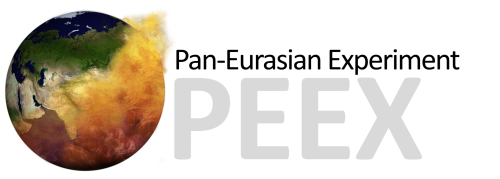Diagnosis and numerical simulation of the atmospheric boundary layer dynamics and the Arctic terrestrial ecosystems state under anthropogenic stress
Abstract
Global climate change plays a significant role in the evolution of ecosystems at high latitudes. At present, the Arctic is attracting increased attention not only as a region with the most noticeable climatic changes, but also as a world pantry of minerals, the perspective of development of which is actively discussed. A significant part of hydrocarbon production in Russia is already carried out beyond the Arctic circle, and over time more and more Northern deposits will be developed, which requires the creation of additional production and urban infrastructure. At the same time, Arctic ecosystems are characterized by extreme vulnerability to anthropogenic impacts and slowness of recovery processes in case of their disturbances. When diagnosing the impact of anthropogenic pressures on Arctic ecosystems, account must also be taken of the fact that the Arctic is characterized by extreme climatic conditions, including low air temperatures, strong winds, ice and snow cover for most of the year, as well as by permafrost. It should also be noted the focal nature of the industrial and economic development of the region, when the areas surrounding the concentration of anthropogenic activities are most affected. The main objective of this project is to develop methods for experimental determining and numerical modelling the extent and intensity of anthropogenic stress on Arctic ecosystems surrounding cities with varying degrees of industrial activity in polar conditions. With the use of multiscale modeling (high-resolution LES- and RANS-models of turbulent flows) the assessment of thermal regime and transport of impurities in the urban environment, calculation of the zones of accumulation of impurities in the city and the range of their removal beyond it in conditions of strong stable stratification characteristic of polar winter will be carried out. The influence of impurity deposition on the thermodynamic regime of the moss-covered/snow-covered tundra and on the hydro-chemical processes in thermokarst lakes, as well as the influence of Arctic cities on their microclimate and thermal regime of the surrounding areas will be investigated in specialized field experiments and using remote sensing data. Data of field experiments and numerical modelling will be used to develop new and improve existing parameterizations for global and regional models of the weather forecast and climate. Based on the principles of mechanics and thermodynamics of porous media, parametrization of heat and gas exchange processes inside the moss cover will be developed and tested using the data of field experiments. Parameterizations will also be proposed to calculate the dynamic and thermal roughness of different types of underlying surface, including urban environment. It is planned the incorporation of new parameterizations in the INM RAS-MSU land soil/vegetation cover model. As objects of research will be used Arctic cities Nadym and Norilsk, differing in the characteristics of the terrain and the degree of anthropogenic stress on surrounding areas.
Duration of the project: 2018 onwards
Project coordination & contact information
Project partners
Funding
In early 2018, the Government of Russian Federation adopted the state program “Socio-economic development of the Arctic zone belonging to Russian Federation for the period up to 2020 “. One of its major priorities is “improving the system of state management of socio-economic development including through spreading out fundamental and applied scientific research in the Arctic.” In February 2018, Russian Foundation for Basic Research (RFBR) issued a call for proposals on “Fundamental Problems in Exploration and Development of the Russian Arctic: Natural and Social Environment”. The projects selected for financial support aim to assess what changes are expected in the arctic environments in view of the planned economic activities and ongoing natural processes; and what can be social consequences of these changes. Results from the assessment will provide scientific basis for environmentally and socially safe human activities in the Arctic. This project is one of the funded projects of this call.
